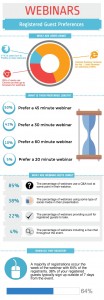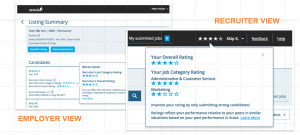Remember when Twitter CFO made that mergers & acquisitions gaffe? The Twitterverse is an easy online forum where mistakes abound in careless entries and late night posts and no online site is immune from the potential for professional mistakes. Website content, LinkedIn, Facebook, and other applications and online forums can all bring industry giants to their knees in a matter of hours. Some are considered faux pas. Other companies and individuals will never recover from texts or reports that surface online.

Examples of Professional Mistakes Made Online
One of the best ways to prevent and prepare for mistakes is to learn from the mistakes of others. Here are some of the biggest examples of online mistakes that have been circulated in the media lately and the aftermath:
A Rape on Campus – Journalistic Error of a Profound Magnitude
Soon after Rolling Stone published the article, information written was discredited due to poor journalistic research and editing choices. The 9,000 word story about an unidentified rape victim did start a national conversation about the problem with rape in the university system, but it did not include the journalistic verification needed to substantiate the article’s information.
The article was published late in 2014, and Rolling Stone retracted it in full on April 5, 2015, after an independent fact check from Columbia Journalism School and a police investigation. The journalism has not resulted in any dismissals, but the magazine has publicly apologized for the failure. While Rolling Stone has also committed to changing their practices in light of the incident, readers will likely change the way they look at future articles from the magazine.
Twitter CFO Tweets, “I still think we should buy them…”
M&A talks are normally kept under wraps until a formal announcement can be made. When Anthony Noto accidentally tweeted about an M&A deal, the whole world saw it. This gaffe, though highly visible in the news, didn’t seem to have any lasting effects on the company as a whole. In fact, his position on Twitter made the incident a lesson to anyone who uses Twitter on a smartphone, where a message could easily end up in the wrong place.
Hillary Clinton’s Email Missteps as Secretary of State
In March 2015, the world learned that Clinton had been using her personal email account for business emails while she was Secretary of State. Furthermore, when the State Department asked for the emails, her staff cherry picked the emails sent to the government. Regardless of whether she did anything technically “wrong,” the act called into question her professionalism and regard for federal regulation. While the incident continues to spark controversy on both sides of the political aisle, she has announced her bid for the presidency in 2016.
These examples are some of the most high profile and illustrate the many ways that companies can experience negative media attention as a result of online actions. Not every company’s faux pas makes it into the limelight, but all companies should actively evaluate the threat of misstep and develop a protocol for handling a poor online decision.
What to Do After an Online Mistake Has Been Made
Your company will likely encounter some kind of online mistake during the course of business. Human error is impossible to eradicate and some mistakes may be preventable, while others may not. In the aftermath of an online error, your company needs to be ready to take action. Firing someone publicly is not always the best or the right answer. Here are some tips for handling the mistake:
- Get in touch with a supervisor (if relevant). Your mistake on a blog, social media account, or other medium may affect the whole organization. It’s important to notify leadership early to ensure the most proactive course of action is taken to remedy the problem.
- Delete the content. Most online mistakes are the result of careless postings on social media or misrepresented website posts. Take it down as soon as possible to prevent further views. Your website administrator should be able to tell you how many visitors you’ve had to a site if it’s a corporate website. Avoid future problems by giving your posts a finite lifespan. Delete all content after a certain point.
- Craft a response. On social media, it’s vital that you prepare a response, particularly if potential clients have seen the information. Apologize for the action and specify how your company is taking steps to ensure the mistake is not repeated. Don’t try to deflect blame or otherwise minimize the error.
- Know when to use humor. Small errors, misprints, or employee postings may be best handled with humor. Make fun of yourself with honesty. You may find an error makes you seem more human in the eyes of your readers.
- Develop a policy for employees on social media. Your employees should know exactly what is expected of them on social media sites. Unfortunately, your employee’s negative remarks on a personal site may reflect poorly on your brand or on one of your clients’. Let them know exactly what will happen ahead of time if they fail to adhere to your policies.
- Consult an attorney. Some mistakes may be difficult to manage. The laws surrounding employment, personal postings, and employer accounts are new and confusing. If you are in doubt, ask your attorney to clarify what you may be facing as a result of the actions.
While the internet can be brutal when a company or employee makes an honest mistake, it also serves an important function in policing companies online. Without it, the public may never know about serious transgressions, factual fallacies, or ethical misconduct.
Nobody is immune from mistakes, and companies should make an allowance for some error. Transparent policies, a plan of action, and monitoring online activity can all help companies prepare for online mishaps and prevent them before they happen.
(271)
Report Post








